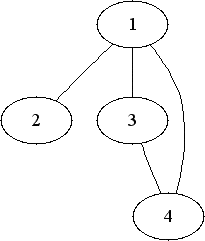大家好,我写了一段代码并得到了输出结果。现在,这是一个trie(字典树)。我想以美观的方式展示它。有人能帮我吗?我希望我的展示方式像这个链接中的样子:http://en.wikipedia.org/wiki/File:Trie_example.svg
但我想知道如何将这个庞大的输出转换成像这样整洁的输出[(1,2), (1,3), (1,4), (3,4)] ??
defaultdict(<type 'int'>, {'A': 1, 'W': 12})
defaultdict(<type 'int'>, {'A': 2, 'X': 25})
defaultdict(<type 'int'>, {'A': 3})
defaultdict(<type 'int'>, {'A': 4})
defaultdict(<type 'int'>, {'S': 5})
defaultdict(<type 'int'>, {'S': 6})
defaultdict(<type 'int'>, {'S': 7})
defaultdict(<type 'int'>, {'D': 8})
defaultdict(<type 'int'>, {'D': 9})
defaultdict(<type 'int'>, {'D': 10})
defaultdict(<type 'int'>, {'D': 11})
defaultdict(<type 'int'>, {})
defaultdict(<type 'int'>, {'R': 16, 'E': 13, 'F': 19})
defaultdict(<type 'int'>, {'E': 14})
defaultdict(<type 'int'>, {'E': 15})
defaultdict(<type 'int'>, {})
defaultdict(<type 'int'>, {'R': 17})
defaultdict(<type 'int'>, {'T': 18})
defaultdict(<type 'int'>, {})
defaultdict(<type 'int'>, {'F': 20})
defaultdict(<type 'int'>, {'F': 21})
defaultdict(<type 'int'>, {'D': 22})
defaultdict(<type 'int'>, {'D': 23})
defaultdict(<type 'int'>, {'D': 24})
defaultdict(<type 'int'>, {})
defaultdict(<type 'int'>, {'C': 26})
defaultdict(<type 'int'>, {'C': 27})
defaultdict(<type 'int'>, {'V': 28})
defaultdict(<type 'int'>, {'S': 29})
defaultdict(<type 'int'>, {})
